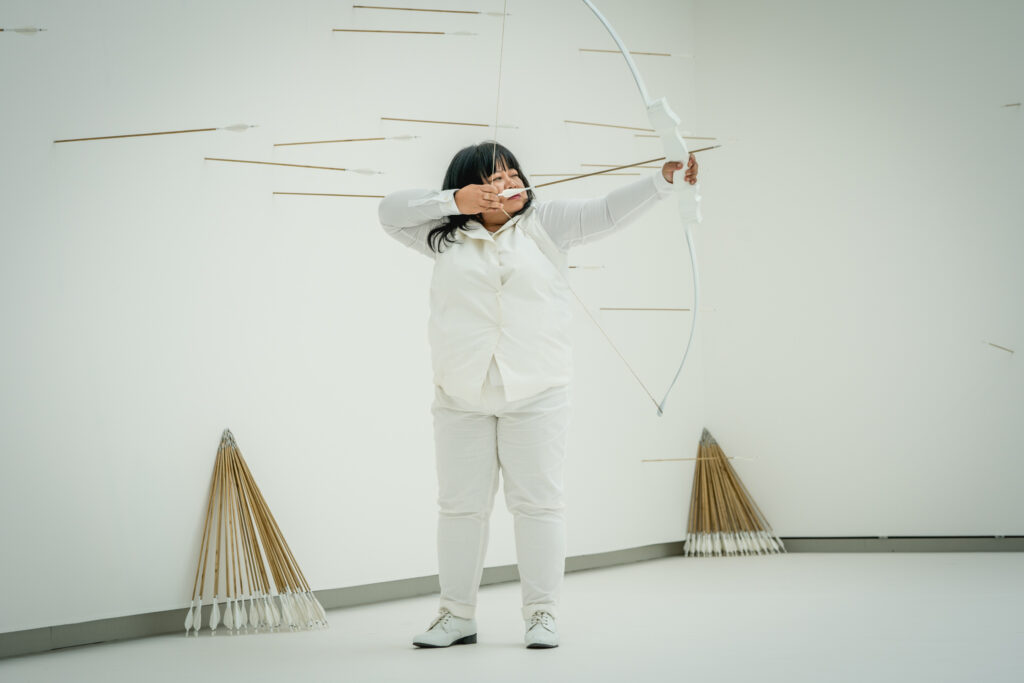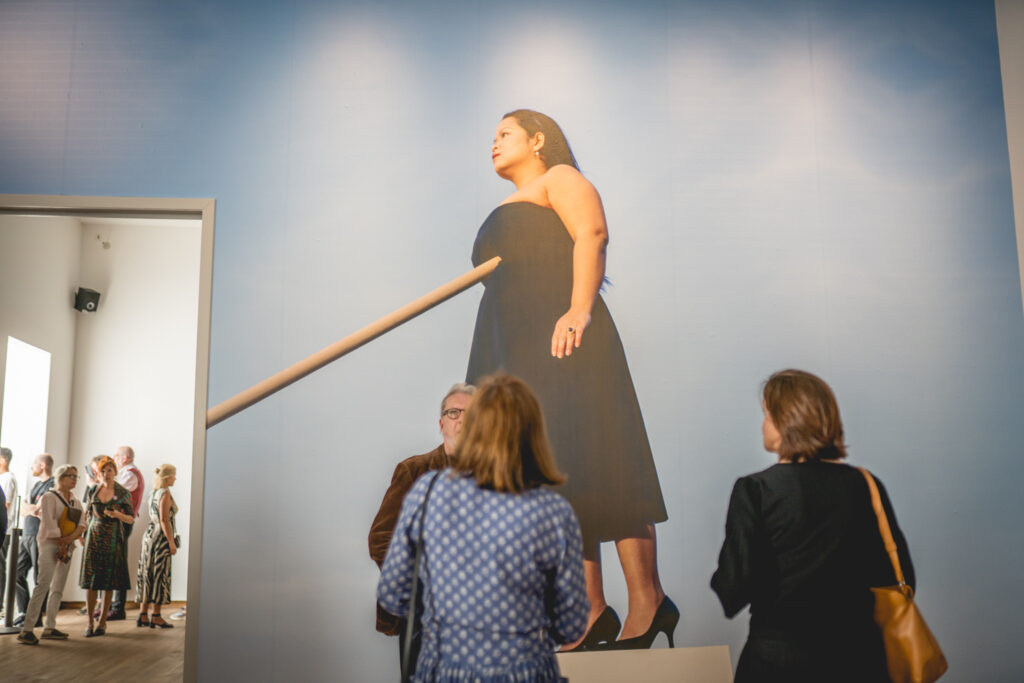By Melati Suryodarmo
Having lived between two major cultural influences, the European and the Indonesian, it was of great significance to me to hold a major solo-show at the Bonnefanten Museum in Maastricht, shortly after another solo museum show finished in Jakarta Indonesia. The Marinus Plantemus foundation offered substantial help with the realization of the exhibition in Bonnefanten. The mid-career survey helped me re-evaluate the problematic of being torn between the aforementioned cultures, the tensions that come with it, and which have come to define my life experience between Indonesia, where I was born and where I am currently living, and Germany, where I studied and lived for many years.

My work is often considered emblematic for feelings of distance, displacement, migration and the feeling of being a stranger amongst strangers. Where indeed in Indonesian and German society, the different expectations associated with the understanding of my identity as a woman have led to specific struggles, I took the opportunity to consider this exhibition as a journey across many cultural options. Reviewing older and newer works for the exhibition, I realized the already syncretic nature of my Indonesian cultural experience drove me to tap into diverse traditions, like elements from the Javanese spiritual tradition, Buddhism, Islam, Christianity, indigenous traditions from Sulawesi, Japanese Butoh dance, European performance, and other very specific instances in Western and Asian art history. Over the years I advanced my body as a catalyst for a methodological assessment of my project of art, its tools and its means. The teachings of Butoh dancer and choreographer Anzu Furakawa meant embarking on a route in which her body becomes “a vessel of life and memory,” and its vulnerability a point of departure and consequence at the same time, because of the intricate entanglement of artwork and maker. Questioning how “embodied knowledge”, in resonance with the environment, with changes in society and with old spiritual memories, survived traumatic periods of rupture like colonialism and authoritarianism are paramount to my practice. Moreover my connection to the world lies within the body. My body is a familiar shelter that is a stronger constant than any physical space. As a student of the iconic performance artist Marina Abramović, and later also becoming her assistant I embraced durational performance as a method focusing on the mental and physical limits of the body. But very differently from Marina Abramovič I wanted to test the limits of a universalized (Western) modern and post-modern fashion with animistic habits and (indigenous) spiritual knowledge, while at the same time I stay away from the primitivizing of contemporary artistic practices and its spaces. I use durational performance as a practice from the beginning of my artistic development, which on its turn informs my other works, like video-installations, photography and choreographies.

The title-piece of the ehibition I’m a Ghost in My Own House, refers to an unhomely state of restlessness. In the performance, fatigue and physical exhaustion become an allegory for dealing with the struggle of being uprooted, and having to deal with the national socio-political and cultural framework after returning to live in Indonesia. The strength, but also the vulnerability I share as a performer, provokes a complicity between artist and the audience as a collective subject. A transgression of our individual, passive, but short attention spanned consumerism occurs, in terms of the work’s duration, slowness, observation, introspection, participatory aspects, and often its lack of entertainment. This is characteristic of many of my other works, in which cultural contexts tend to bleed into others. I would claim that my work is anti-essentialist when it comes to a reflection on identity. Though very aware of global contemporary art lingua, my body-of-work is as much a continuation of mistaken constructions by the West as rooted in keen indigenous knowledge. Unhoused at home, my specific age-old genealogy of worldliness suggests a complex self-portrait. I hope that the exhibition is sharing this with the Dutch audience. Next to the exhibition I am very happy that a first in depth monograph with different commissioned art historical texts could be produced alongside this exhibition.
